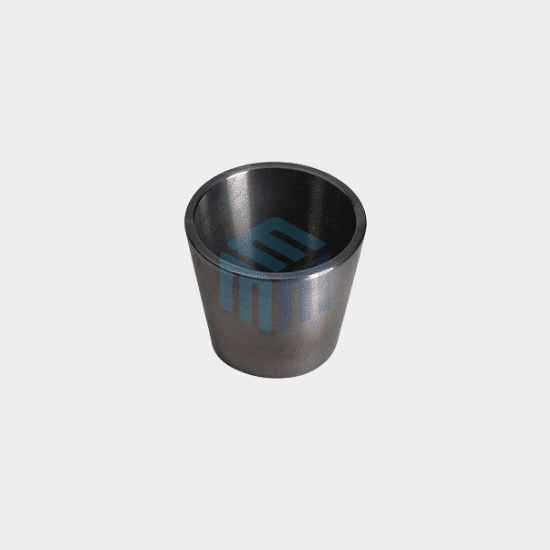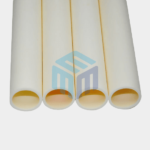Molybdenum crucibles are highly specialized containers used in various high-temperature applications, especially in metallurgy, materials science, and electronics. Molybdenum’s unique properties make these crucibles highly advantageous for numerous processes. Here’s a detailed overview of the uses and benefits of molybdenum crucibles:
Uses of Molybdenum Crucibles
Molybdenum crucibles are crucial tools in high-temperature applications due to their excellent thermal conductivity and resistance to corrosion. Below are some of the primary uses of molybdenum crucibles:
- Metal Melting and Casting:
- Molybdenum crucibles are extensively used in the melting and casting of high-temperature metals, such as titanium, tantalum, and tungsten. They can withstand the extreme heat required for these processes without deformation.
- Sintering Processes:
- Used in sintering for various materials, including ceramics and hard metals. Molybdenum crucibles facilitate the densification of powders at elevated temperatures, ensuring uniform heating and optimal material properties.
- Chemical Vapor Deposition (CVD):
- Crucibles are utilized in CVD processes for producing thin films and coatings in the semiconductor and electronics industries. Molybdenum’s thermal stability makes it suitable for these applications.
- Physical Vapor Deposition (PVD):
- Similar to CVD, molybdenum crucibles are employed in PVD processes for depositing materials onto surfaces in a vacuum, critical for producing advanced materials.
- Research and Development:
- Commonly used in laboratories for high-temperature research applications, such as studying material properties, phase transitions, and reactions involving solid-state materials.
- Nuclear Industry:
- Due to their resistance to corrosion and ability to withstand high temperatures, molybdenum crucibles are utilized in processes related to nuclear materials handling and processing.
- Glass and Ceramics Manufacturing:
- Molybdenum crucibles are used in the production of high-temperature glass and ceramic materials, where they provide excellent thermal and mechanical properties.
Benefits of Molybdenum Crucibles
Molybdenum crucibles offer several key benefits that make them ideal for high-temperature and high-performance applications:
- High Melting Point:
- Molybdenum has a melting point of approximately 2623°C (4743°F), making it one of the best materials for high-temperature applications. Molybdenum crucibles can endure extreme temperatures that would cause many other materials to fail.
- Excellent Thermal Conductivity:
- Molybdenum exhibits high thermal conductivity, ensuring efficient heat transfer during melting and sintering processes. This property helps achieve uniform heating and better material characteristics.
Applications of Molybdenum Crucibles
Molybdenum crucibles are widely used in various industries for high-temperature and precision processes. Some key applications include:
- Chemical Resistance:
- Molybdenum is resistant to most acids and alkalis at elevated temperatures, making crucibles ideal for use in chemically aggressive environments. This minimizes the risk of contamination and prolongs the crucible’s lifespan.
- Low Vapor Pressure:
- Molybdenum has a low vapor pressure at high temperatures, which helps maintain the integrity of the process and reduces material losses during operations.
- Mechanical Strength:
- Molybdenum crucibles exhibit exceptional mechanical strength, enabling them to withstand the stresses associated with high-temperature processes without breaking or deforming.
- Versatility:
- These crucibles can be used in various applications, including metal processing, advanced material fabrication, and research, making them versatile tools in industrial and scientific settings.
- Customizability:
- Molybdenum crucibles can be tailored to meet specific dimensions, shapes, and features, allowing for customization according to particular needs, which enhances usability in specialized applications.
- Environmentally Friendly:
- Molybdenum is a naturally occurring element, and its use in crucibles can be more environmentally friendly compared to some other materials. Additionally, molybdenum products are often recyclable.
- Cost-Effectiveness:
- Although molybdenum crucibles may have a higher initial cost, their durability and long service life can result in lower overall costs in high-temperature processes compared to less durable materials.
- High Purity:
- Molybdenum crucibles can be produced with high purity levels, which is crucial for applications requiring minimal contamination during material processing.
Read also: What Are The Features and Advantages Of Molybdenum Crucibles?
Summary
Molybdenum crucibles are essential tools in high-temperature applications due to their unique properties, including high melting points, chemical resistance, and mechanical strength. These advantages make them invaluable in industries such as metallurgy, electronics, and material science, contributing to efficient and reliable processing of materials.
M-Kube Enterprise is a USA-based company specializing in customized laboratory products, laboratory consumables, and tailored laboratory solutions. We proudly serve a global clientele, providing our products and services across India, Australia, New Zealand, Singapore, Malaysia, South Korea, Dubai, the Philippines, Indonesia, and Vietnam. Whether you’re in research, manufacturing, or industry, M-Kube Enterprise delivers high-quality solutions to meet your specific laboratory needs.





